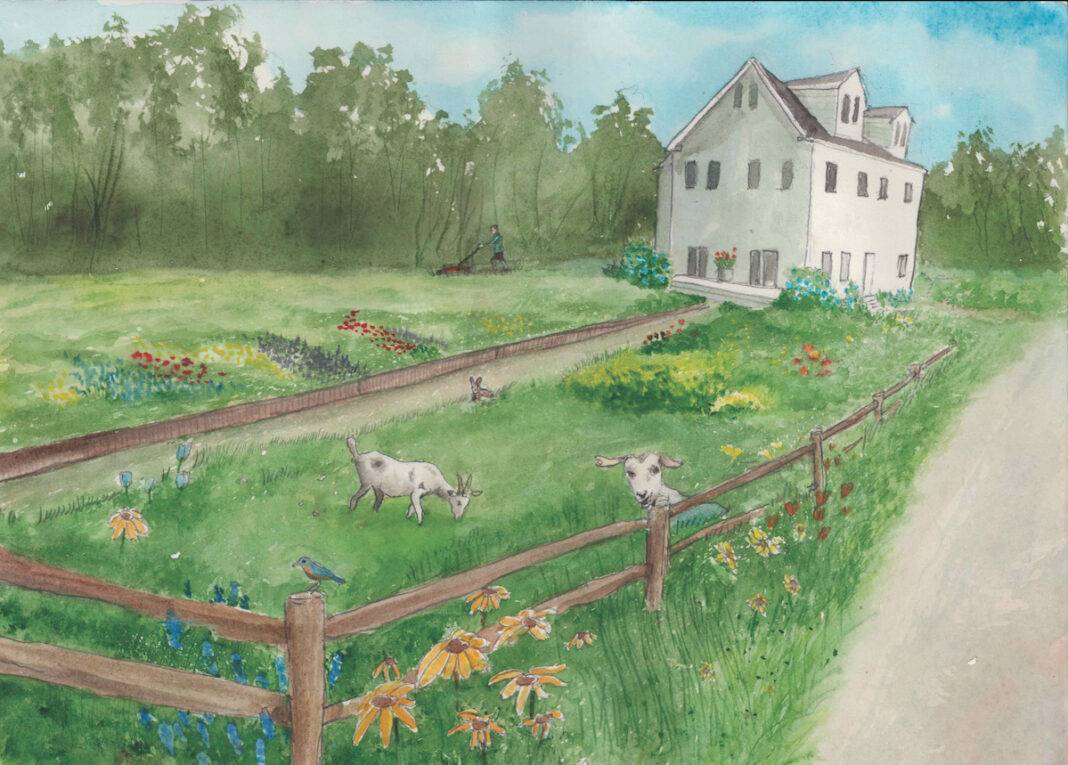Can a couple with competing yard ideals achieve a green new deal?
My husband, like so many North American men, loves a lush green lawn. To be fair, our culture has long groomed these men to express their sense of dominion blade by blade. Masculinity is measured in monoculture, by an ability to banish weeds and slugs and moss. Consequently, any challenge to this verdant vision generates a rapid defense. No, we cannot have a “natural” yard, these men — or my husband, at least — scoff.
What can I say? As for so many of our ridiculous customs, we can blame European aristocracy. Vast emerald lawns, for those who slept in castles, were more evidence of their wealth. A chance to make others, ahem, green with envy.
We have embraced and aspired to this status symbol. This pressure is so intense that, as one study indicated, “Households make tradeoffs between lawn aesthetics and concern for the environment and exposure to chemicals in part due to strong social pressures surrounding lawn maintenance.” Put another way, we are willing to jeopardize our health and that of our planet to hew to some antiquated notion of outdoor aesthetics.
No matter the financial cost. A recent Washington Post story says lawn-loving Americans spent $105 billion in 2020. No matter the ecological cost. The same article estimates the U.S. has 40 to 50 million acres of this environmental deadspace. No matter the inputs. Three trillion gallons of water, 59 million pounds of pesticides, three billion gallons of fuel for lawn maintenance, reports the Post.
However, having long witnessed the financial and emotional inputs that my husband has historically sunk into creating this most unnatural of nature, I have not — will not! — give up this particular battle. I’ve simply been biding my time.
That strategy is no longer an option.
You see, my husband and I have been building a new summer home. There have been delays. And delays to our delays. A small project has become a large one. An “easy” project has become anything but. Three years later, however, the end is in sight. The solar panels are on the roof. Our septic system was installed last week. Perhaps you can hear the heartbeat of a hammer securing shingles to the outside walls.
And so my husband’s and my protracted battle about our yard is no longer hypothetical, no longer “when the time comes …” The time to dismantle the blade-iarchy is now.
Please know that I am not a lawn anarchist. I grew up with the suburban ideal of a lawn. I have fond memories of lying on my back outside, grass blades tickling my feet, my best friend Cathy beside me, the two of us staring skyward and sharing imaginings of elephants and bunnies in the clouds. A lawn is an invitation to recline, to kick a soccer ball. I get that. I am not anti-lawn at all. I am anti-so-much-lawn. Which is my appeal to my husband: Let’s just … not have so much of it.
He points out, rightfully, that our new yard is already tiny, a chunk of a larger lot that was severed in the 1970s, right around the time I was lazing on a lawn and cloud-watching.
Exactly, I say. So let’s be creative with what little we have.
He casts a side-eye at me.
I know what he imagines. It’s the same thing he’s been imagining for 20 years. No matter that our off-Island property is pockmarked with patches of dirt where wasps have created subterranean surveillance. Or that it displays considerable evidence of our two large dogs (and one visiting Ukrainian dog, a Schnauzer who loves to dig). Or that it has patches of clover, moss, butter-yellow dandelions.
Our lawn has always been thus. No matter the seeding, the aerating, the hoping. We let nature do the watering, and birds and bats do the pest control.
“I just need really good seed,” my husband says, with the earnest conviction of a junkie who is sure that this time things will be different.
It will not. Which is why I’m staging an intervention. Which is why, if you drive by our tiny postage-stamp size Vineyard lot, you will not see a blanket of green. You will see periwinkle hydrangea perfectly fed by the Vineyard’s acidic soil. You will notice clumps of wildflowers to entice butterflies. And yes, you will likely see some patchy grass, perhaps ten by ten feet. Just enough for an adolescent girl, or even a middle-aged woman, to lie on her back, look to the sky and dream.

